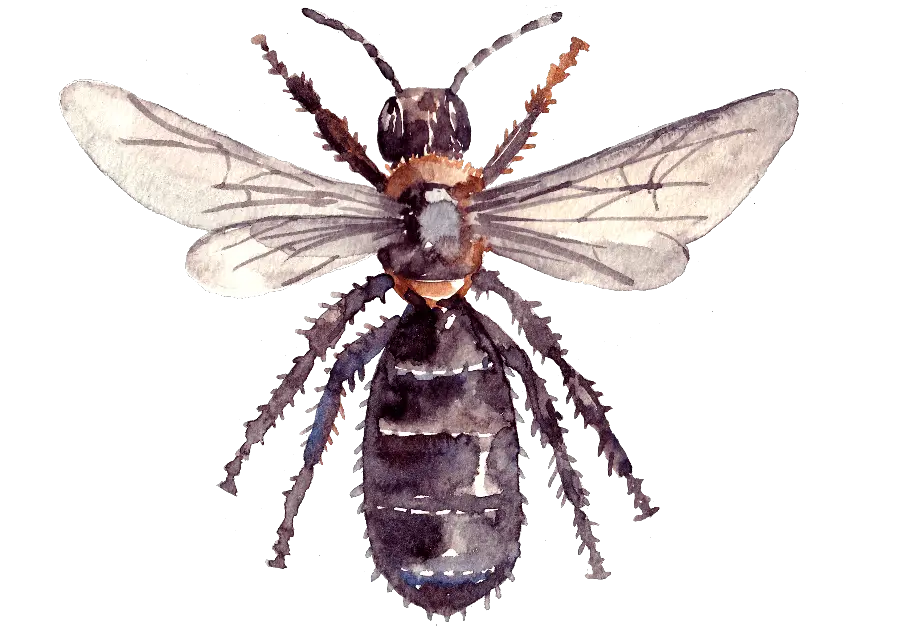Last updated on January 3rd, 2024 at 03:24 pm
In the vast and varied world of bees, the Chelostoma campanularum, commonly known as the Small Scissor Bee, is a miniature marvel. This bee, with its delicate features and intriguing habits, showcases the intricate wonders of the natural world. Let’s embark on a journey to unravel the mysteries of the Small Scissor Bee.
Appearance: A Tiny Beauty
The Small Scissor Bee is a study in delicate design:
- Diminutive Size: As the name suggests, this bee is small, typically measuring around 6-8mm in length.
- Sleek Body: Unlike the fuzzy bumblebees, the Small Scissor Bee has a more slender and sleek body, predominantly black with subtle metallic reflections.
- Distinctive Jaws: One of its most distinguishing features is its long, scissor-like jaws, which it uses for nest-building.
Habitat: Nature’s Nooks and Crannies
If you’re eager to spot these tiny engineers, here’s where you should focus:
- Geographical Spread: Predominantly found across Europe, including the UK.
- Preferred Habitats: They have a penchant for sunny spots and are often found in gardens, meadows, and woodland clearings.
Behaviour: The Nimble Nesters
The Small Scissor Bee showcases some unique behaviours:
- Nest Construction: True to their name, these bees use their scissor-like jaws to cut leaves and petals, which they then use to line their nests. They often nest in tiny crevices, such as hollow plant stems or old beetle holes in wood.
- Solitary Nature: Unlike many bees that live in colonies, the Small Scissor Bee is a solitary creature. Each female crafts her own nest and provisions it with food for her offspring.
Diet: Floral Delights
What does the Small Scissor Bee feast on?
- Nectar: Primarily, they feed on nectar. They have a particular fondness for bell-shaped flowers, such as harebells and campanulas, and their slender body allows them to access these flowers with ease.
- Vital Pollinators: While they have specific floral preferences, their foraging habits make them essential pollinators for these plants, ensuring their reproduction and survival.
When and Where to Spot Them
For those keen to witness these bees in action:
- Time of Year: They’re most active during the warmer months, typically from May to August.
- Time of Day: Daylight hours, especially during warm, sunny spells, are when they’re most active.
- Location: Gardens with a variety of bell-shaped flowers, meadows, and woodland clearings are prime spots for sightings.
| Best Time to Spot | Location | Activity Level |
|---|---|---|
| Morning | Gardens | High |
| Midday | Woodland Clearings | Moderate |
| Late Afternoon | Meadows | High |
Why They Matter
The Small Scissor Bee, though tiny, plays a significant role in our ecosystem:
- Pollination Specialists: Their foraging habits ensure the pollination of specific plants, contributing to biodiversity and the health of various ecosystems.
- Ecosystem Indicators: Their presence or absence can be a sign of the health of a habitat. A decline in their numbers might signal environmental challenges that need attention.
Conclusion
The Small Scissor Bee is a testament to nature’s ability to craft creatures that are both delicate and resilient. With its scissor-like jaws, sleek body, and specific floral preferences, it adds a touch of wonder to our gardens and wild spaces. As we explore the great outdoors, let’s take a moment to appreciate these tiny marvels and their contribution to our world.
Explore our comprehensive bee identification guide for a deeper dive into the world of bees and to help identify the myriad species that grace our planet.





